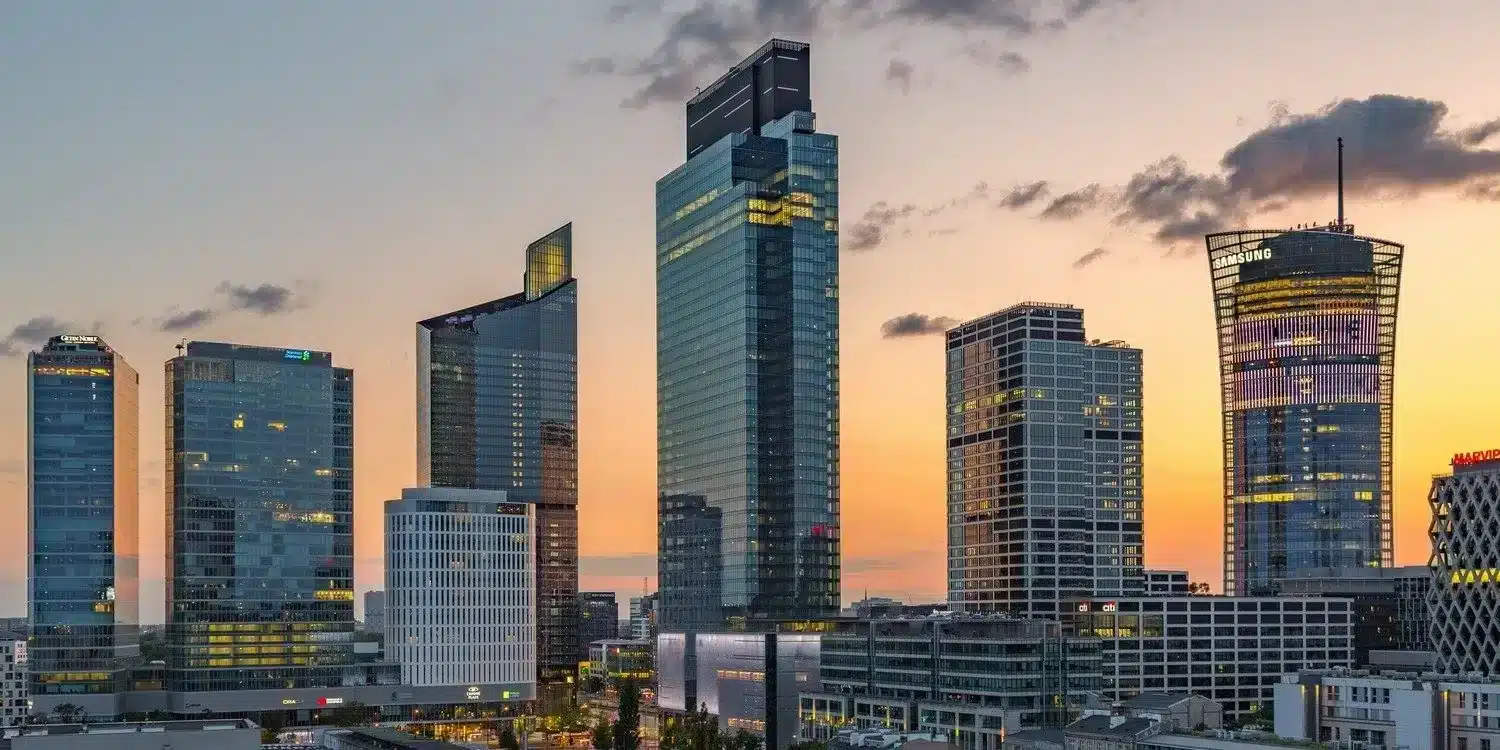The activity of tenants in the Warsaw office market is not decreasing despite the low supply of new offerings, resulting in a decrease in the vacancy rate to 10.7%. There is growing interest in buildings under construction, evidenced by the increasing popularity of pre-lease agreements – such conclusions come from the quarterly report of BNP Paribas Real Estate Poland “At a Glance – the office market in Warsaw” for the third quarter of 2024.
Limited new supply
In the third quarter of 2024, only 11,000 sq.m. of new office space was released on the market as part of three projects: Viridis B (7,000 sq.m.) and Bohema Offices D and E (2,500 sq.m. and 1,600 sq.m. respectively). This means that since the beginning of 2024, the capital’s office market has only expanded by 75,000 sq.m. within the scope of eight projects.
The prospect of expanding modern office space inventory only arises in the coming quarters. At the end of September, over 300,000 sq.m. of office space under construction was recorded, including both new projects and refurbishments of older buildings. The majority of these are investments located in the city center, especially around Daszyński roundabout. The completion of one major office building – The Form with a floor area of 28,500 sq.m. is planned by the end of this year. If investment plans remain unchanged, an additional 105,000 sq.m. will be added to Warsaw’s market in 2025.
Vacancy rate is dropping
At the end of the third quarter of 2024, the vacancy rate in Warsaw reached 10.7% (a decrease of 0.2 percentage points compared to the previous quarter). The availability of office space was 670,700 sq.m. In central zones, the vacancy rate was 8.9%, while it was 12.2% outside the center.
Forecasts for the vacancy rate indicate that in the upcoming quarters we can expect further decreases in the volume of unoccupied office space. This will be facilitated by the slowing down of developer activity, which will allow the absorption of already existing office spaces. The smaller supply of spaces in prime locations encourages developers to resume work on projects that have been suspended so far, an example of which is the joint project of Ghelamco and PKP at Gdański Station.
Tenants are not slowing down
However, the limited supply of modern office space does not slow down the activity of tenants. In the third quarter of 2024, the gross demand for office space reached 176,100 sq.m. The largest part of the demand was new lease agreements, which covered 56% of the rented space. Pre-lease agreements, covering 38,600 sq.m., accounted for 22% of all transactions in the specified period.
“Of the five largest transactions of the quarter, two were pre-lease transactions. The positive results of such agreements in the third quarter caused their share in total demand from the beginning of the year until the end of September to reach 9%. This is a positive signal for the market. The interest in offices in Warsaw that we have observed since the beginning of 2024 has not deviated from the values registered in the same period the previous year.” – observes Małgorzata Fibakiewicz, Senior Director of Office Space Rental at BNP Paribas Real Estate Poland.
Between June and September 2024, most of the capital’s space was rented out by the business services sector, responsible for one-quarter of the total demand. Financial services came in second, taking up 18% of the space. This result was influenced by the largest in terms of area agreement concluded by Santander Bank (24,500 sq.m.) This is the largest office space rental transaction in Poland since 2022.
Rising fit-out costs – a new challenge
Importantly, tenants are increasingly expecting a pragmatic approach to arranging rented space in a maximally functional way. The growing importance of fit-out results from rising costs, awareness of ESG requirements, and prolonged leasing periods. Already at the property analysis stage, the existing spatial arrangement, the sound standard of walls and glazing, and the condition of HVAC installations are considered.
“We also need to assess energy consumption, power sources and total emissions – both during project implementation and later maintenance. Although new buildings are characterized by higher energy efficiency, their implementation generates significant emissions. It is also crucial to review contract provisions relating to ESG and finishing standards, as not all innovations bring direct benefits to the tenant.” – emphasizes Jan Pawlik, Workplace Management Director, ISS Poland.
Will remote work end?
According to the “KPMG 2024 CEO Outlook” report, which surveyed 1300 CEOs worldwide, over 80% of them expect a full return of employees to the office within three years. In 2023 numbers stood at 63%. Until now, a full 5-day office week has been established by Boeing, Goldman Sachs, Tesla, and UPS amongst others, while employees of most large companies, including Amazon, Apple, Meta, and even Zoom must come into the office for several days a week.
“Many entrepreneurs believe that a return to stationary work will improve the company’s results. However, the enthusiasm of employees for returning to the office is much lower. Today’s employees primarily expect flexibility from their work environment and want to work on their own terms. This does not mean, however, that they demand perpetual home office work, they also appreciate the value of working from an office. However, they want to have autonomy in choosing the place to work that is best for them and allows for greater efficiency.” – adds Dorota Mielke, Deputy Director, Office Leasing, BNP Paribas Real Estate Poland.
Source: https://ceo.com.pl/rynek-biurowy-w-warszawie-stabilny-mimo-niskiej-podazy-i-wymagan-najemcow-75949
